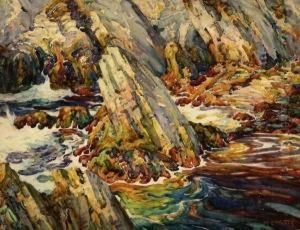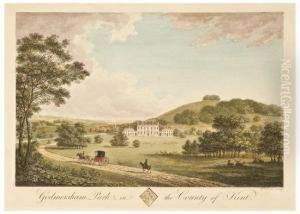William Watts Paintings
William Watts was a British artist and engraver, known for his creation of 'The Seats of the Nobility and Gentry', a significant work published as a series of prints in 1779. Born in 1752, Watts developed his craft during a period when the art of engraving was a highly respected form of printmaking in England. While there is not a wealth of detailed biographical information readily available about Watts' early life or training, it is known that he became quite adept at his craft and contributed to the visual record of Britain's landscapes and estates.
Watts' work as an engraver was particularly notable for its level of detail and accuracy. 'The Seats of the Nobility and Gentry' was a collection of topographical views that depicted the grand homes and estates of Britain's elite. This project was ambitious for its time and served as a significant record of contemporary English architecture and garden design. The collection was well-received and contributed to Watts' reputation.
Aside from this famous series, Watts also worked on other projects, including 'A New and Complete Book of Martyrs' by John Foxe, where he was responsible for engraving the plates. His precise line work and attention to detail were well-suited to the intricate illustrations required for historical and religious texts.
Watts' contribution to the arts was not limited to his engravings. He was also involved in the creation of a geographical drawing school, which aimed to improve the standards of cartography at the time. His interests in precision and education in the arts reflected the values of the Enlightenment, where there was a strong emphasis on knowledge, learning, and the dissemination of information.
Despite his accomplishments, William Watts remains a somewhat obscure figure in art history, overshadowed by contemporaries such as William Hogarth and Thomas Gainsborough, whose works have garnered more attention over time. However, Watts' engravings continue to be valuable historical documents and examples of the engraving art form. He passed away in 1851 at the impressive age of 99, leaving behind a legacy of detailed engravings that capture the elegance and grandeur of 18th-century Britain.





